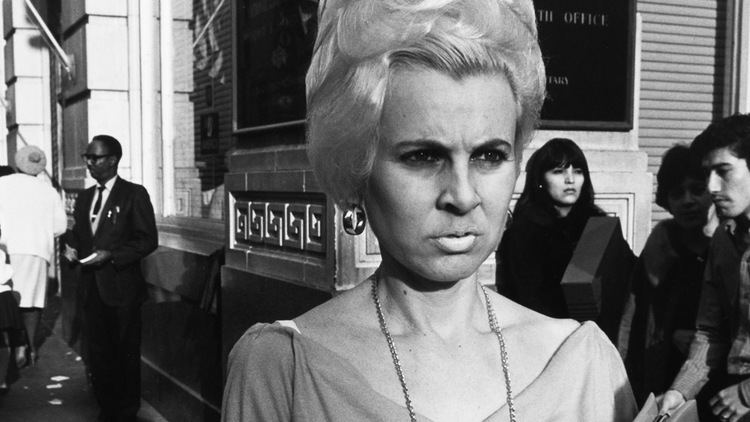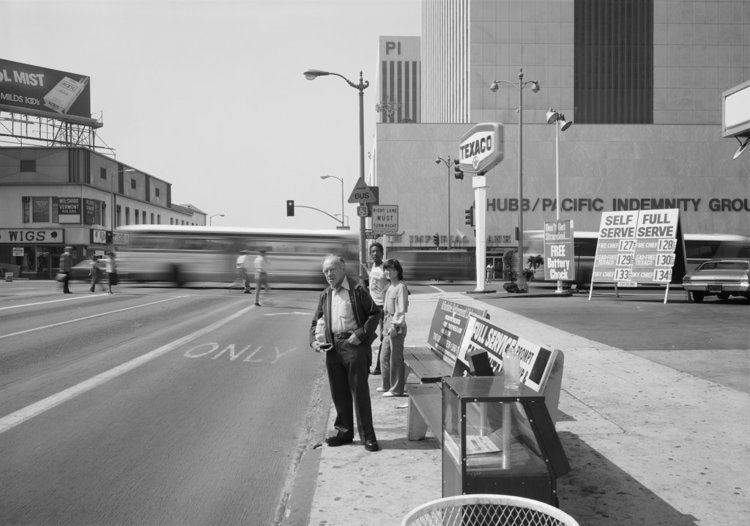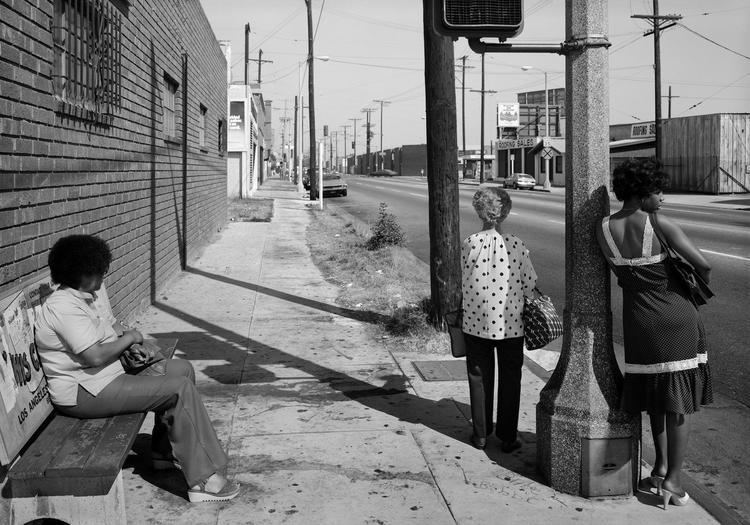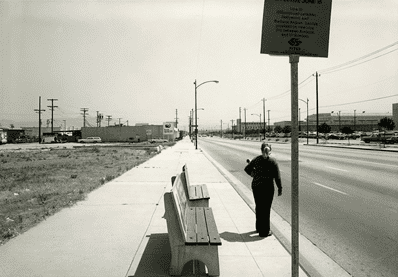Years of service 1967-1969 | Spouse Judith Freeman | |
 | ||
Website anthonyhernandezphotography.com Books Rodeo Drive - 1984, Guerrilla Marketing Success, The Flaw in the Law of Attraction, The Wanderer: The Novel, The Enlightened Savage Similar Jim Britt, Jay Conrad Levinson, Judith Freeman | ||
Anthony Hernandez (born 1947) is an American photographer who divides his time between Los Angeles, his birthplace, and Idaho. His photography has ranged from street photography to images of the built environment and other remains of civilization, particularly those discarded or abandoned elements that serve as evidence of human presence. He has spent most of his career photographing in Los Angeles and environs. "It is L.A.'s combination of beauty and brutality that has always intrigued Hernandez." His wife is the novelist Judith Freeman.
Contents
- Early life and career formation
- Early street work
- Artistic shift and later work
- Major publications
- Selected solo exhibitions
- Selected awards
- Selected public collections
- References

Early life and career formation

Hernandez was born in Los Angeles to Mexican immigrants, and his family lived near Aliso Village, a housing project in East Los Angeles, before moving to Boyle Heights at about the age of four. He traces his introduction to photography to a textbook a friend gave him when he was a senior at Roosevelt High School. His first camera was a 35mm Nikon purchased with money he won in a raffle. He took basic photography courses while attending East Los Angeles College from 1966-1967, though he is largely self-taught. A close aunt recognized and nurtured Hernandez's artistic talents, introducing him to jazz music and providing him a subscription to Artforum magazine, which the artist regards as an early influence of his artistic development. The photographer also cites Edward Weston as an important influence, which is reflected in Hernandez's first formal series, a set of photographs take on southern California beaches in 1969-1970. Hernandez regards the work of Lewis Baltz. as having the closest alignment to his own.

His earliest images are of parts and machinery left in an empty lot near an automobile repair shop close to his home, foreshadowing the development of common subjects of his work: urban decay and abandoned detritus. Hernandez began to devote his time to photography after serving in the United States Army from 1967-1969 (he served as a medic in the Vietnam War in 1968). In the summer of 1969, he took a workshop with Lee Friedlander, and in 1970 he built his own darkroom in an apartment he rented in the Westlake area of Los Angeles. In the same year, Hernandez's work was included in his first museum exhibition and publication, California Photographers, 1970, a survey of new photography from the state. The 1971 exhibition and publication, The Crowded Vacancy, is regarded as being seminal in launching the photographer's career. In 1970 Hernandez presented a portfolio of images to John Szarkowski, curator of photographs at the Museum of Modern Art, who purchased two photographs for the museum and also introduced him to the photographers Dianne Arbus, Duane Michals, and Gary Winogrand.
Early street work

Starting in 1969, his work is defined by 35 mm black-and-white street photography (mainly portraiture) in Los Angeles and Hollywood that established a distinctive style characterized by subjects who appear alienated and "overwhelmed by unseen forces." One critic remarked that these compositions show a "peculiar state of stasis." Writing about his 1976 pictures of Washington, D.C., a critic observed that the photographs present an "original photographic approach" that captures an unusual state of animation—even "disequilibrium"—with his subjects simultaneously "energized and abstracted." His early work shows the influence of Garry Winogrand.

In the late 1970s Hernandez began to use a Deardorff 5x7 view camera, which changed the character of his work. Between 1978 and 1983 he continued to make images of prosaic elements of Los Angeles street life and public spaces, but the wider orientation of the view camera resulted in people taking a less prominent place in his pictures while augmenting the presence of the built environment. These pictures represent a fusion of street and landscape photographic traditions and offer energized and animated compositions unusual for view camera work. Many of the images suggest darker social realities. A series from this period, "Public Transit Areas," focuses on city bus stops, and was complemented by related bodies of work, including "Public Use Areas," "Public Fishing Areas," and "Automotive Landscapes." Some of these pictures have been likened to the aesthetic of the New Topographics. Collectively these series offer rare examples in any art form that depict the day-to-day lives of the poor and working class of Los Angeles.

In 1984–1985, responding to a suggestion from an art director at Los Angeles magazine, he shifted to color work with a series of 35 mm close-up street portraits of shoppers taken on Rodeo Drive. He used the same zone focus technique he had used in his earliest street work whereby the camera is pre-focused for a set distance, allowing for quick capture. Even so, they adopt some of the same deliberateness and formalness of his view camera work. He also chose to use transparency film and printed in Cibachrome to accentuate the color. Hernandez commented that these portraits are more intimate than his earlier street portraits. The images explore a complex mélange of consumerism, class, self-presentation, fantasy, sexuality, and photographic representation, and the artist regards them as his first successful color photographs. Hernandez stopped photographing people after this project, and it marked the beginning of his exclusive use of color photography.
Artistic shift and later work
In 1986, as artist-in-residence at the University of Nevada in Las Vegas, Hernandez photographed an array of spent shells and exploded debris left over at a target range—absent of the shooters. He continued this project after the residency and added shooting ranges located in the Angeles National Forest. This series, "Shooting Sites," signaled a shift in his artistic vision toward capturing scenes suggesting abandonment and desolation absent of human players yet charged with intrigue about their involvement. The pictures also reveal another signature tactic of his compositions, which is to offer visual allure that draws a viewer into troubling subject matter. The photographer likens this series with his earlier "Automobile Landscapes."
His "Landscapes for the Homeless" series, which he produced from 1988–1991, captured images of homelessness sites located near and under Los Angeles freeways, focusing exclusively on the inhabitants' makeshift shelters and discarded refuse nearby. This suite of photographs was unique in their focus on the evidence of homelessness, and Hernandez struggled to get them published and exhibited in the United States. A critic described the images as both "forensic and poetic." This work was the basis of his first solo museum exhibition and his first monograph.
The photographer has said that both "Shooting Sites" and "Landscapes for the Homeless" connect to his experience serving as a medic in the Vietnam War.
"Pictures for Rome," a series Hernandez made from 1998–1999 under the auspices of the Rome Prize, eschews views of classic structures in favor of details of abandoned buildings and incomplete office structures located on the periphery of the city. He used the same square format he had used for his "Landscapes of the Homeless" pictures, and they were his first images taken indoors.
His "Pictures for Oakland" (2001) and "Pictures for L.A." (2000–2002) document various states of construction and disintegration of buildings, the latter including the Walt Disney Concert Hall, Belmont Learning Center, and Aliso Village.
A body of work associated with the Los Angeles River created from January 2003–May 2004, "Everything," explores the river and environs—areas near Hernandez's boyhood home—in a series of color still lifes of flotsam and jetsam situated in or near the river. These images function concurrently as color and form studies, and as commentary on societal relationships with the discarded objects.
In a series Hernandez shot from 2007–2012, Forever, he revisits homeless sites, yet changes the perspective to one of looking out from within an encampment.
In "Discarded," 2012–2015, Hernandez comments on the aftermath of the subprime mortgage crisis in his austere color photographs of abandoned houses and other remains located in residential subdivisions in the desert east of Los Angeles. This series marks the return of people to his images, including at least one portrait.
Hernandez continues to use film cameras, though his prints are digitally produced.
Major publications
Selected solo exhibitions
Selected awards
Selected public collections
Hernandez's work is held in the following public collections:
